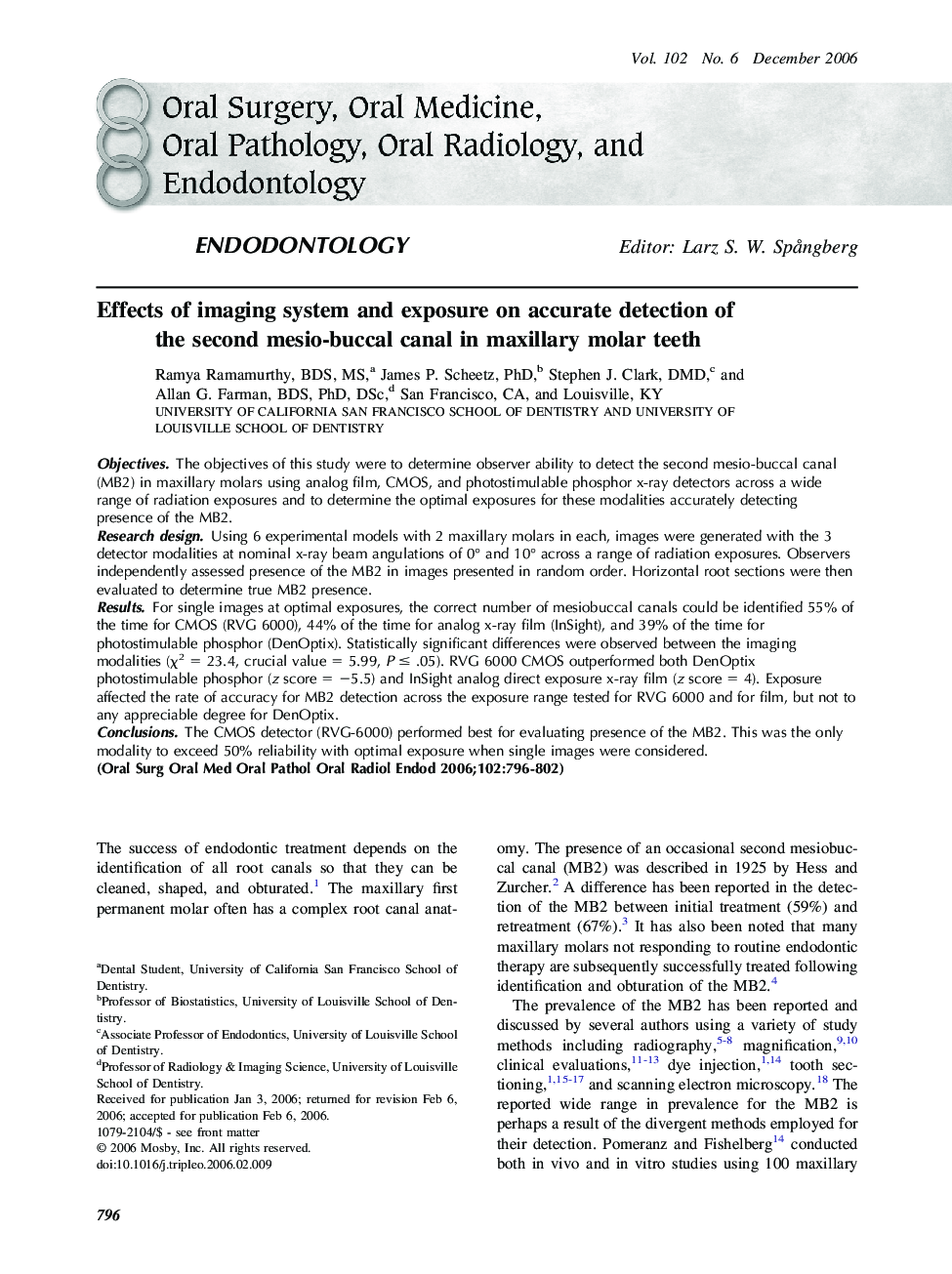| Article ID | Journal | Published Year | Pages | File Type |
|---|---|---|---|---|
| 3169720 | Oral Surgery, Oral Medicine, Oral Pathology, Oral Radiology, and Endodontology | 2006 | 7 Pages |
ObjectivesThe objectives of this study were to determine observer ability to detect the second mesio-buccal canal (MB2) in maxillary molars using analog film, CMOS, and photostimulable phosphor x-ray detectors across a wide range of radiation exposures and to determine the optimal exposures for these modalities accurately detecting presence of the MB2.Research designUsing 6 experimental models with 2 maxillary molars in each, images were generated with the 3 detector modalities at nominal x-ray beam angulations of 0° and 10° across a range of radiation exposures. Observers independently assessed presence of the MB2 in images presented in random order. Horizontal root sections were then evaluated to determine true MB2 presence.ResultsFor single images at optimal exposures, the correct number of mesiobuccal canals could be identified 55% of the time for CMOS (RVG 6000), 44% of the time for analog x-ray film (InSight), and 39% of the time for photostimulable phosphor (DenOptix). Statistically significant differences were observed between the imaging modalities (χ2 = 23.4, crucial value = 5.99, P ≤ .05). RVG 6000 CMOS outperformed both DenOptix photostimulable phosphor (z score = −5.5) and InSight analog direct exposure x-ray film (z score = 4). Exposure affected the rate of accuracy for MB2 detection across the exposure range tested for RVG 6000 and for film, but not to any appreciable degree for DenOptix.ConclusionsThe CMOS detector (RVG-6000) performed best for evaluating presence of the MB2. This was the only modality to exceed 50% reliability with optimal exposure when single images were considered.
